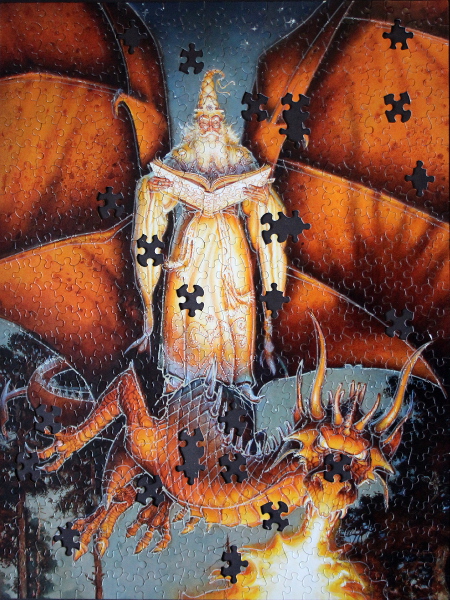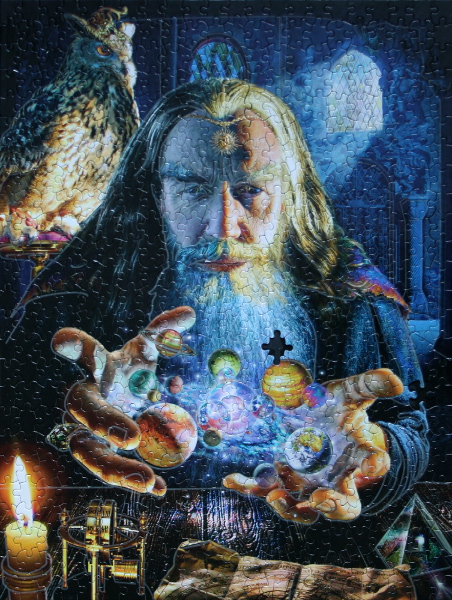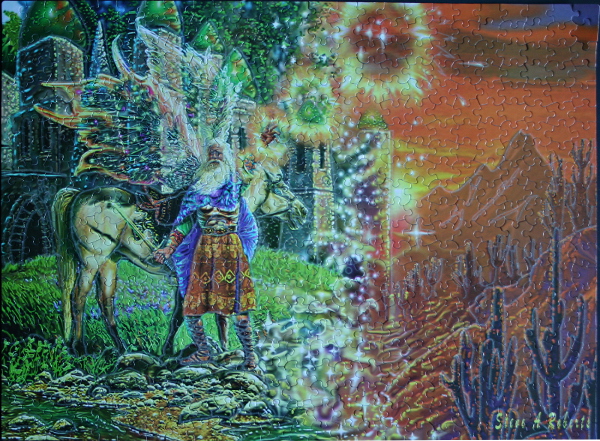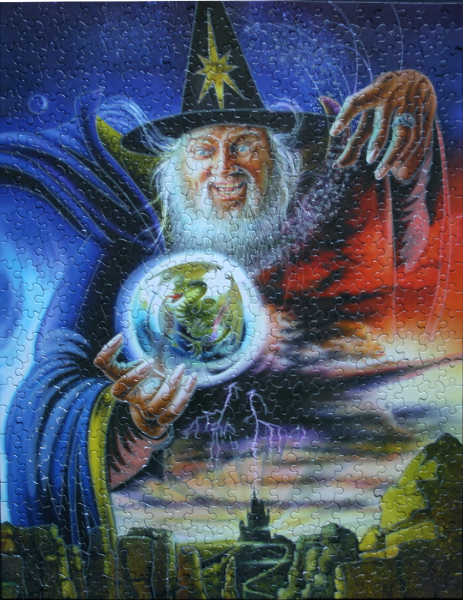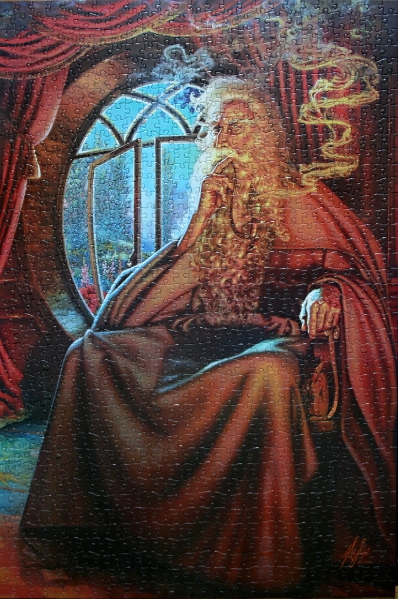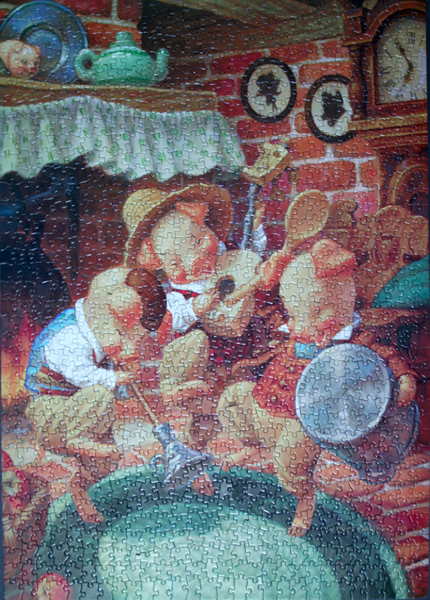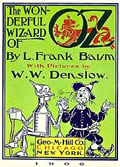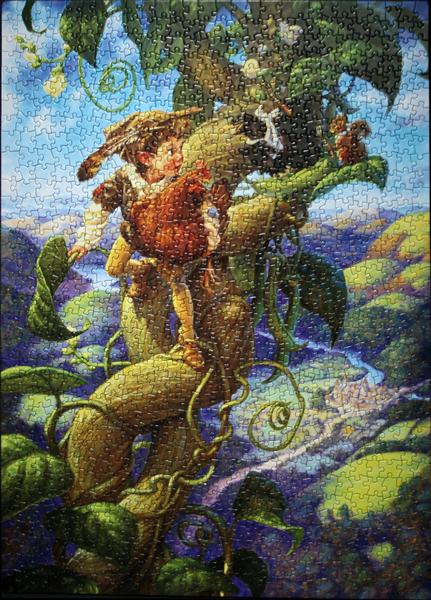
Size: 1000 pieces
Dimensions: 49cm x 68cm
Producer: Master Pieces, #71145
Notes: Jack and the Beanstalk is an English folktale. The tale is closely associated with the tale of Jack the Giant-killer, and is known under a number of versions. Benjamin Tabart’s moralized version of 1807 is the first appearance in print, but “Felix Summerly” (Henry Cole) popularized it in The Home Treasury (1842), and Joseph Jacobs rewrote it in English Fairy Tales (1890). Jacobs’s version is most commonly reprinted today and is believed to more closely adhere to the oral versions than Tabart’s, because it lacks the moralizing of that version.
In the Jacobs version of the story Jack is a young lad living with his widowed mother. Their only means of income is a cow. When this cow stops giving milk one morning, Jack is sent to the market to sell it. On the way to the market he meets an old man who offers to give him “magic” beans in exchange for the cow.
Jack takes the beans but when he arrives home without money, his mother becomes furious and throws the beans out the window and sends Jack to bed without supper.
As Jack sleeps, the beans grow into a gigantic beanstalk. Jack climbs the bean stalk and arrives in a land high up in the sky where he follows a road to a house, which is the home of an ogre. He enters the house and asks the ogre’s wife for food. She gives him food, but the ogre returns and senses that a human is nearby:
Fee-fi-fo-fum!
I smell the blood of an Englishman.
Be he live, or be he dead,
I’ll grind his bones to make my bread.
However, Jack is hidden by the ogre’s wife and overhears the ogre counting his money. Jack steals a bag of gold coins as he makes his escape down the beanstalk. Jack repeats his journey up the beanstalk two more times, each time he is helped by the increasingly suspicious wife of the ogre and narrowly escapes with one of the ogre’s treasures. The second time he steals a hen which laid golden eggs and the third time a magical harp that played by itself. This time he is almost caught by the ogre who follows him down the beanstalk. Jack calls his mother for an axe and chops the beanstalk down, killing the ogre. The end of the story has Jack and his mother living happily ever after with their new riches. [Wiki]
